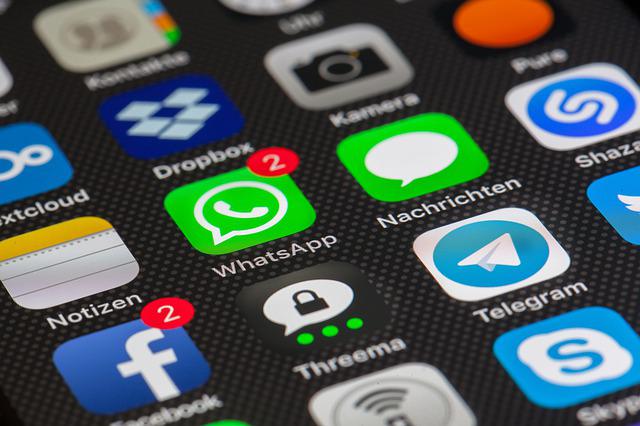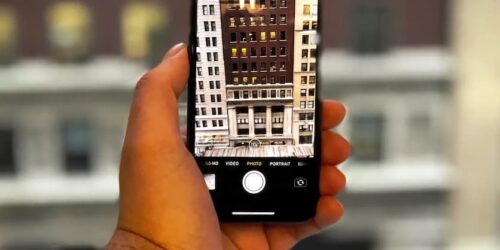How To Take A Picture Of The Moon With iPhone? A Professional Guide
First, how to take a picture of the moon with iPhone?
Hold the iPhone up to the night sky and it will go into low-light mode, automatically limiting the shutter speed to between 3 and 10 seconds.
A slow shutter speed is preferred when photographing the night sky. Yeah, but since the full moon is so bright, try some other Settings.
Please continue reading as I provide more detailed instructions on how to use an iPhone to take a photo of the moon.
Table of Contents
Needed Things To Take A Picture Of The Moon With iPhone
You need a tripod with a smartphone holder in order to take pictures of the moon. Using a slow shutter speed could prevent your iPhone from moving while you’re shooting. To further reduce the likelihood of camera shake, always use the self-timer when taking pictures. If you have a dual-camera iPhone, use the telephoto lens.
Nightcap Camera: Take A Picture Of The Moon
The iPhone camera app doesn’t have as many manual settings as this app for shooting stars. You can lower the also value, which will lower the noise, among other things.
The Settings
To switch to the felennoto ens on an iPhone with a dual camera, tap 1x in the bottom right corner of the screen. Swipe your finger down on the left side of the screen to select the Stars mode, and then lower the lSO to the lowest value. The least value on my iPhone 8 Plus is lSO 20.
Take The Picture
Focusing is not required because the focus is automatically set to infinity (FOC = 100). If not, use your finger to swipe to the right at the bottom of the screen. On the right side of the screen, swipe your finger up or down to adjust exposure. Press the shutter button when the moon is drab. In Stars
mode, photos are taken automatically with the self-timer.
Lightroom CC Mobile: Take A Picture Of The Moon
There is a five-second long exposure mode in Lightroom CC Mobile. The app then takes several photos in a row and merges them into one. Starting with the iPhone 6S, you can choose the DNG RAW file format.
The Settings
At the left of the shutter button, you can choose the Lona Exposure mode. The top of the screen shows the DNG or JPG file format, and tapping on it changes it. To switch between the wide-angle and telephoto lenses on an iPhone with dual cameras, tap the symbol to the right of the shutter button. By tapping the three dots in the top right corner of the screen, you can choose the self-timer in the settings.
Take The Picture
To make the photo darker with exposure compensation and take the picture, tap the moon and swipe your finger to the left of the screen. It might take some time for the photo to become visible because it is being calculated.

Camera App: Take A Picture Of The Moon
Launch the photo mode of the iPhone camera app. If you have a dual camera, you can tap on 1x to change to the telephoto lens. To focus and choose the exposure, tap on the moon. To make the image darker, swipe your finger down now. Then take the picture with the self-timer.
Read about: How To Take Pictures Of The Stars On iPhone?
Unused Things For Smartphone Moon Images
The flash on your phone is one thing you won’t want to be using when trying to capture an image of the Snow Moon. Make sure this is turned off if you’re taking pictures of the moon, advises Jacutan, because flashes muck up night sky images.”
He suggests High Dynamic Range (HDR) settings, which are perfect for taking still pictures of the night sky, to aspiring moon photographers instead. “You’ll want to keep this on if your phone camera has the option to use it, which is typical with most phones made before 2019,” Jacutan continues.”
Smartphone users should also refrain from using the zoom feature while taking pictures of the moon. Zooming in on the moon might seem natural, but doing so will actually result in a smaller overall image.
“The best night sky photography includes both the celestial object and the darkness of the sky,” claims Jacutan. When taking pictures of the moon, don’t be afraid to leave the contrast in because people like to see it.”
Victoria in the Fens, a Twitter user, offers some additional suggestions for enlarging the moon in your pictures. She told Newsweek: “Make sure that big objects are far away from the moon and crop your photos on your phone to make the moon appear larger.”
The photographer, who captured an incredible photo of the Snow Moon over the River Great Ouse in 2021, also offered advice for those just getting started with moon imaging projects: “The more photos you take, the more you will learn, so always take one whenever you can.”
The weather is one factor that experts can advise on when taking a moon photo. In addition to writing, moon photographer Robert Budd, also known on Twitter as Lucky Budd, regularly uploads his photos to the service. He told Newsweek: “To find out when the clear window will open, I consult the weather report. If the clouds cooperate, I’ll be able to take a picture of the Snow Moon!”
Last but not least, Victoria in the Fens “I’ve been looking, and this week’s weather has been difficult, but I’m not going to let that stop me. I’ll be out since I’ve experienced enough full moons to know that patience is truly required when the weather and full moon are combined.
“For about two years now, I’ve been photographing the full moon every month. Possibly missed one or two… I enjoy the challenge, and watching a full moon rise or set is truly magical.”
Conclusion
The article’s main emphasis was on iPhone moon photography.
Apple makes taking a photo of the It’s simple to take a picture of the Moon with an iPhone, but it might be more difficult to capture a shareable image of that faraway celestial body. Of course, distant objects are always difficult to photograph in great detail, but the Moon is particularly challenging because it is such a bright subject against a dark background. However, the aforementioned advice could assist iPhone users in maximizing their chance.
And once more, thanks for reading.





